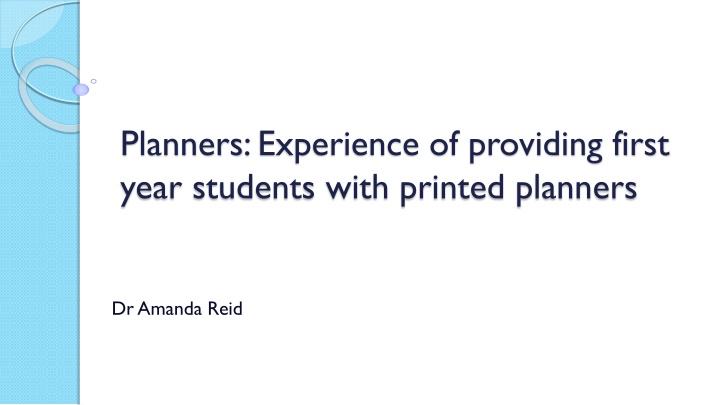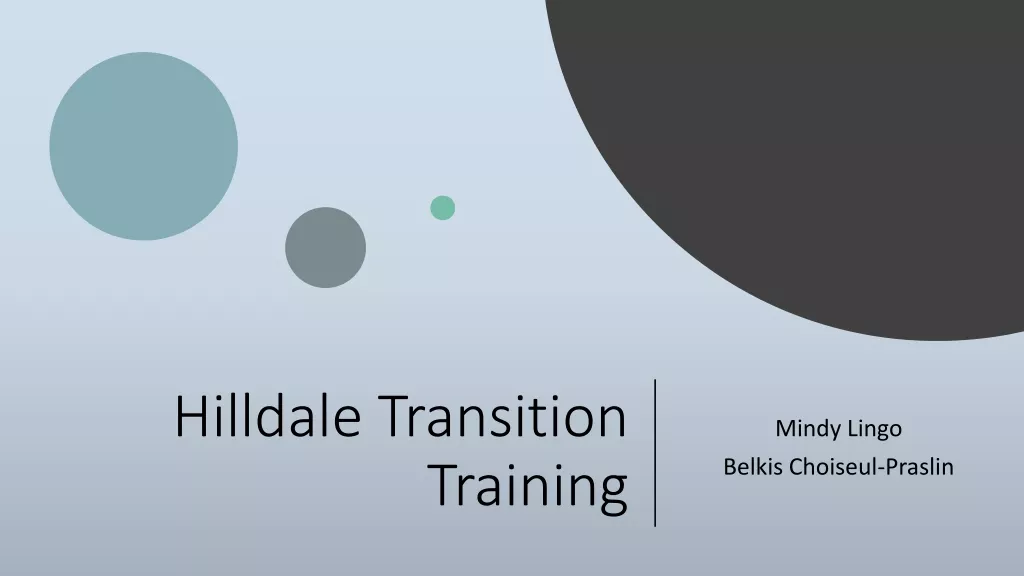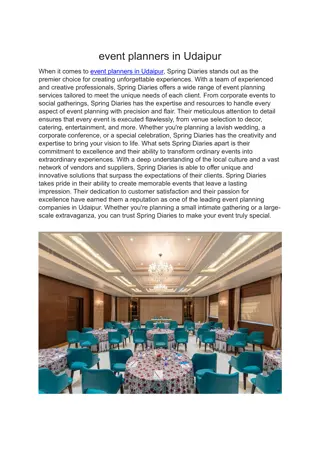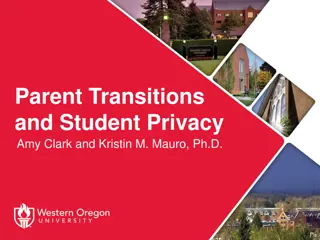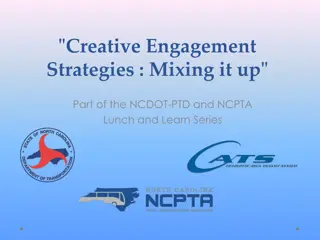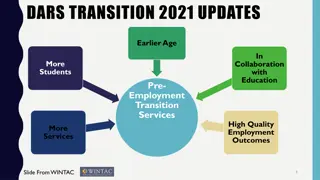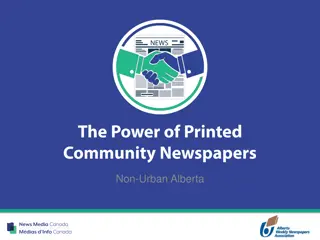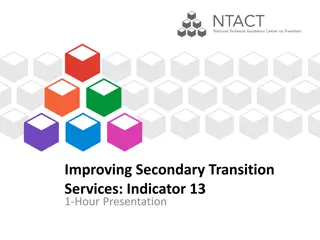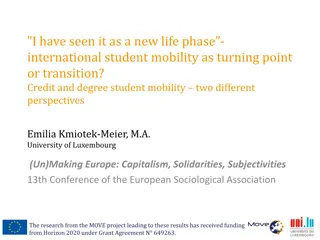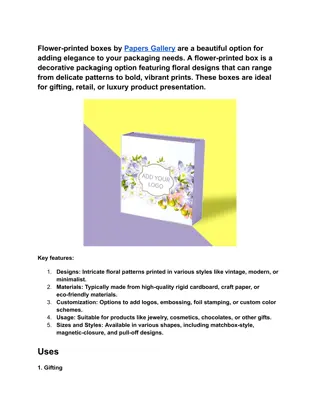Enhancing Student Transition with Printed Planners
In this study led by Dr. Amanda Reid, the impact of providing first-year students with printed planners is explored. The research delves into the successful transition from school to university, emphasizing the role of planners in supporting effective adaptation. Results show high satisfaction and usage rates among students, with insights on potential transitions to electronic diary systems. The study evaluates planner use among Biomedical Science and Biochemistry students, highlighting the benefits and preferences associated with printed planners.
Download Presentation

Please find below an Image/Link to download the presentation.
The content on the website is provided AS IS for your information and personal use only. It may not be sold, licensed, or shared on other websites without obtaining consent from the author.If you encounter any issues during the download, it is possible that the publisher has removed the file from their server.
You are allowed to download the files provided on this website for personal or commercial use, subject to the condition that they are used lawfully. All files are the property of their respective owners.
The content on the website is provided AS IS for your information and personal use only. It may not be sold, licensed, or shared on other websites without obtaining consent from the author.
E N D
Presentation Transcript
Planners: Experience of providing first year students with printed planners Dr Amanda Reid
Background The successful transition from school pupils to university students Keynote paper in the 2016 Teaching & Learning Conference. Put it in your diary : The role of student planners in supporting effective transition Jo Croft (session 62,English students) Need to develop and support projects that will actively help with this transition for Science Students. Core element of secondary education is the use of a school provided planner. Much of what we produce for students prior to enrolment and during induction is in an electronic only form.
Planner Overall Familiarity decision to use hdc (http://hdc-uk.com/hdc/) 13+ million planners produced! Flexibility individual cover, content pages & off the peg diary part. Cover design molecular model of an interferon. Content before and after the diary pages Diary pages able to include university week numbers, directed study weeks and university holidays.
Planner detail Pre-diary content School details, key university documents, academic calendar, programme structure, university tips, PDP, world of work careers centre, student advice & wellbeing. Post-diary content Assessment regulations, academic progression,classification and grading of awards and academic appeals. Diary pages One week view with a box to add deadlines etc. misconduct, managing student
Evaluation of planner use Biomedical Science and Biochemistry students were surveyed about their planner use via a clicker session in the final week of semester 2. There were 24 questions which ranged from asking about previous use, current use, student potential use if a more focussed tutorial session was introduced at the beginning of semester 1 and finally if they thought we should continue to provide a planner.
Results Students previous use 95% of the students were given a planner by their school/college Of those,71% were made to use it. 76% found planner use in school useful CONCLUSION: Continue with use for level 4 (level 3) but enable a transition to an electronic diary system e.g.Outlook
Received a planner or have bought one? 92% had received a Biomolecular Sciences planner 21% would have bought one if they had not been given one, but 37% had already bought a planner prior to arriving at university 92% liked being given a planner CONCLUSION: If we continue to give out planners, either include in material posted to students or make it clear that they will receive one.
Planner use It should be noted that there was no introductory tutorial/planner session which was dedicated to going through the planner and its use. Use of different parts of the planner varied widely and there was no apparent difference in use between material before or after the diary section.
Most & least used The diary section was most used 63% of the students. The PDP section was the least used at first 3%, however the question also asked if staff had pointed out this section during the first PDP session and 60% of students said that they did and that they were now using it.
Other parts Most parts of the planner seemed to have been read by 40-50% of the students who did the clicker session, Student progression and academic appeals were low at 17%, however, university tips (63%) and academic misconduct (59%) were above average.
Overall & going forward questions 99% of students thought having a paper copy of key members of staff and their contact details was good. 81% thought we should continue to provide a planner 78% felt they would have made better use of the planner if there had been a section in their introductory tutorial where the tutor went through the planner with them.
Summary Provision of a planner to level 4 students (and level 3 going forward) is positive and fully supported by the students. Anecdotally in talking to students,staff have been told that within the first few weeks of settling in, for some students having a planner enabled them to feel in control . I think that provision should continue for the 2017 2018 academic year for level 4 and should be introduced level 3.
Learning from experience To make best use of the planners going forward I would suggest that the following should be adopted 1. The first introductory tutorial should have dedicated time to encourage students to fill in sections of the planner, highlight other material and especially the PDP section. Students prior to arrival could be sent the planner (depends on delivery date) or it is made clear that they will get one. Student involvement - get together a student editing team. Going forward we should also encourage students to make use of electronic calendars/diaries etc.such as Outlook. 2. 3. 4.
Thanks To Dr Phil Denton and the Faculty of Science Teaching & Learning budget for providing for the cost of the planners. To Dr Janice Harland for support and proof reading. To the students for providing honest feedback.
